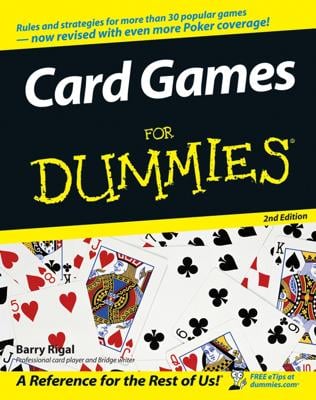Although the artwork changes and the numbers move all over the place, some basic concepts stay true across all (or at least almost all) trading card games — and that includes the type of cards in the set. Regardless of the theme, back story, complexity, or target age range, all games are populated with characters that do stuff, have places where the action happens, use tons of props, and spin out a variety of plot complications.
Those needs translate into a basic group of card types. Understanding these basic types helps you pick up new games very quickly. If you've got the general idea of how these types of cards work together, you only need to figure out how the details in your new game govern the cards. Game mechanics, the core rules of the game that define its look and feel (stuff like how cards come into play, timing, and resources), vary wildly depending on the game, but the basics — ah, the basics — usually remain the same.
Of course, as soon as someone says the basics always stay the same, somebody out there comes out with a game that breaks all of the industry norms. But that's a good thing; games like that keep other designers on their toes and ensure that the trading card game world stays new and vibrant. If you think that sounds like "positive media spin," you're probably right. Designers sometimes go overboard in their quest for new and different mechanics. Instead of elegant innovation, they end up with a horrid, confusing, and unplayable kluge of unrelated elements — and all in the name of new.
The following bullets outline the common card types you find in trading card games. Although the names change for every game, the concepts still hold true:
- Most of the action in a game begins and ends with the characters. These cards represent the people, aliens, ships, cars, armies, or mobs that rampage through your game's world. Most of the cards in your decks come from this group because, when you get right down to it, every story depends on strong characters.
- Any time you get people involved in something, they need equipment of one kind or another to make their tasks easier. These cards usually add new abilities to your characters or strengthen their existing skills. These cards include high-tech spy gadgets, planes, cars, and weapons of all shapes, sizes, and eras.
- Locations set the stage for your characters, giving them places to control, fight over, and generally hang out. Depending on the game, locations might or might not take center stage in the gameplay. Some games treat locations like resource generators, while others cast them in a very central role by making them part of the victory conditions. Locations usually come into play and stay there — at least until another group of cards blows them away.
- Not every well-laid plan goes, well, according to plan. That's where interrupt cards come into play. These plot complications can alter the course of a battle, deliver extra resources, shuffle characters around, and generally wreak havoc with your opponent's strategies. This type of card usually comes into play at any point in the game, does its thing, and then vanishes into the discard pile.
- Effects alter the game in larger ways and last over many turns. They come into the game during your turn just like characters and equipment, but they function more like interrupts. They stay on the table indefinitely, often forming a support base for your deck's key strategies.
Some games start with the basic card types and then add rules that change how the cards work in the game. In the Vs. game from Upper Deck, for instance, you can play any card in the deck face-down into your resource row. Of course, if you put the right type of card in there — namely a Plot Twist (the Vs. game version of the "interrupt" card) or a Location — you can gain an extra benefit during the game.

